|
Disasters & Crashes |
|
Disasters and crashes
at the airfield or by aircraft to and from Croydon |
|
1920 |
 |
|
(above) Airplane crash near Bute Gardens. Wallington. August
1920 |
|
|
1924 |
 |
|
(above
and below) On the 24th
of December 1924. the 'De Havilland DH 34' G-EBBX aircraft, which
had been on regular daily service to and from Paris, was seen
to leave the aerodrome at about 12pm. Aboard, were the passengers
– five men and three women – the pilot, and a considerable
amount of mail. There was a strong wind blowing. About a mile
from the aerodrome is a 300 foot rise at Russell Hill. Some difficulty
seemed to be experienced by the pilot, as the aircraft narrowly
missed hitting one of the houses in Mount Park Avenue. It then
continued in a semi-circular manner as though trying to rise,
but then suddenly nose-dived to the ground. Immediately it struck
the grassy slopes. The machine became a mass of flames as the
petrol tanks burst and ignited. None of the passengers stood
any earthly chance of escape, for the tragedy was virtually immediate.
Due also to the strong wind, the flames became so fierce that
any help was impossible, and all on board were burnt to death
within seconds. |
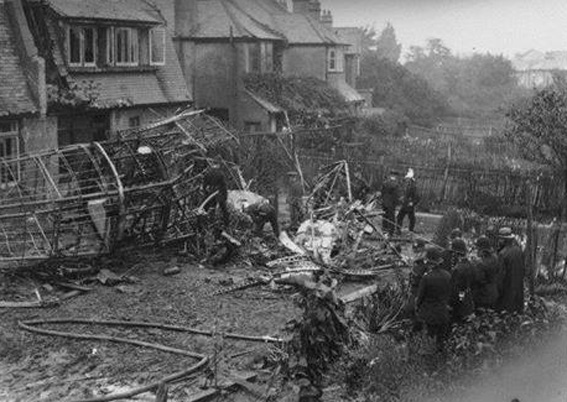 |
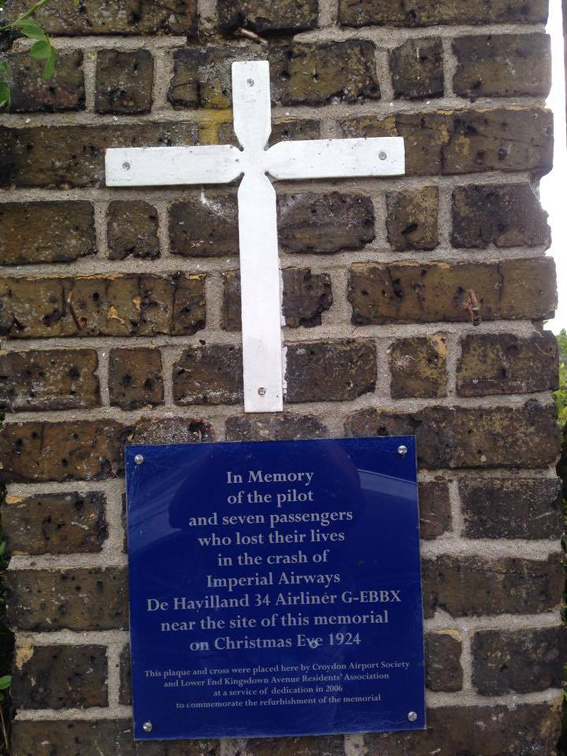 |
|
|
1925 |
|
(below)
KLM 'Fokker' that made a crash landing on Sandgate beach in 1925
en route to Croydon |
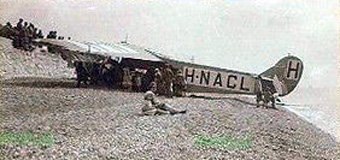 |
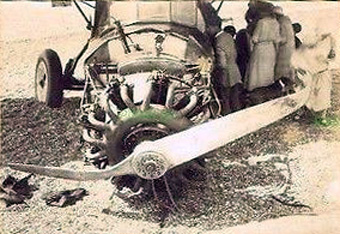 |
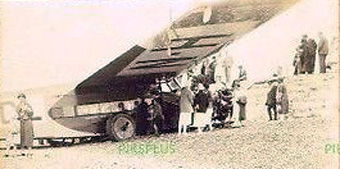 |
|
|
|
|
(below) Christmas Eve 1925 |
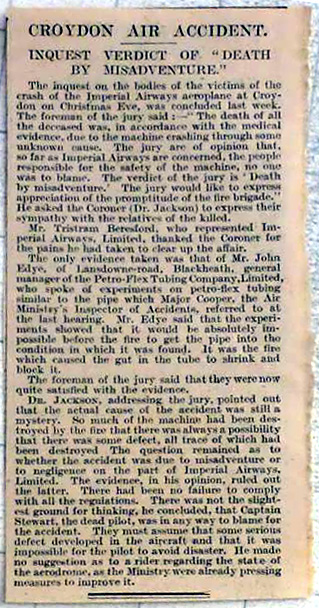 |
|
1926 |
|
(below) On the 21st of October 1926, Handley
Page W.10 G-EBMS City of Melbourne ditched in the English Channel
18 nautical miles (33 km) off the English coast. All 12 people
on board were rescued by FV Invicta. |
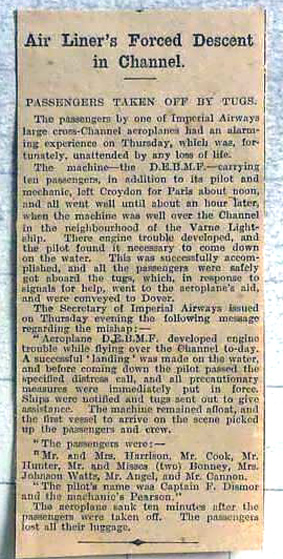 |
|
|
1928 |
|
An Imperial
Airways Vickers Vulcan G-BLB crash occurred on the 13th of July
1928 on a test flight from Croydon Airport with a pilot and five
passengers crashed near Purley, Surrey three miles from the airport,
with the loss of four passengers. As a result of the crash Imperial
Airways stopped the flying of staff (so called joy rides) on
test flights |
|
|
|
|
(below)
September 1928 as this Fokker F.ViiA Princess Xenia airplane
touched down after its record breaking flight from India. They
covered the 5,000 miles in 4 and a half days,which was 2 and
a half days faster than the previous record set the year before, |
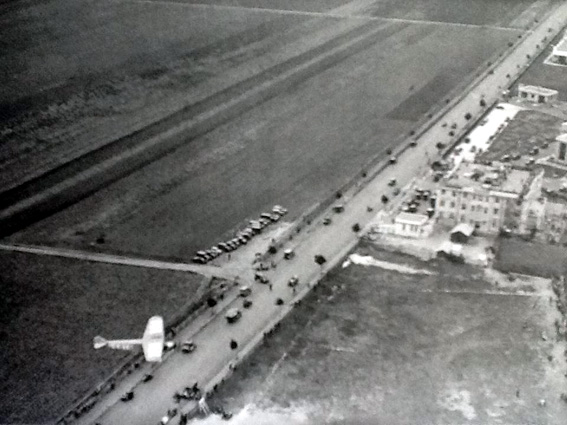 |
|
|
1929 |
|
(below) Simmonds Spartan aircraft, registered
ZK-AAP.belonging to H.F. Mase (Aviation) Ltd crashed on the 19/04/1929.
Named "The All Black" by Lady Bailey at Croydon on
the 19th of April 1929, crashed on the 26th of April 1929 and
was completely wrecked at Roanne, France when it crashed on take-off
from a field after a forced landing while on a flight from England
to New Zealand |
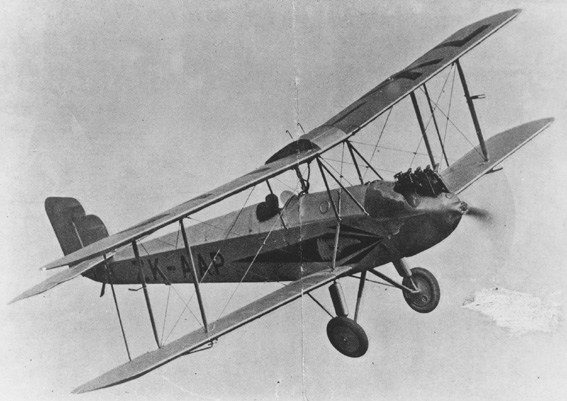 |
|
|
|
|
On the 17th of June 1929, Handley Page W.10 G-EBMT
City of Ottawa ditched in the English Channel whilst on a flight
from Croydon to Paris with the loss of seven lives. |
|
|
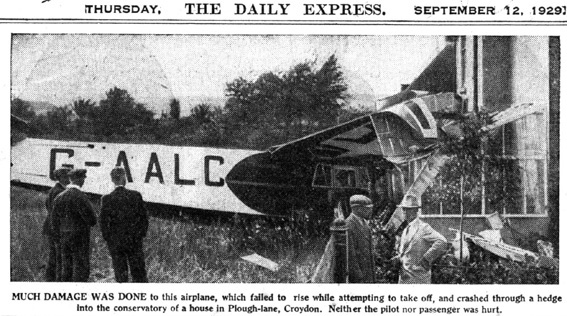 |
|
(above)
'Fokker-Grulich F.III' of 'British Airlines' crashed on the 10th
of September 1929. |
|
|
|
|
(below) On the 6th of November 1929 a 'Junkers
G 24' of Luft Hansa D-903 crashed at Godstone, Surrey, United
Kingdom whilst on an international scheduled flight from Croydon
to Amsterdam-Schiphol Municipal Airport. Of the eight people
on board, Glen Kidston was the only survivor. |
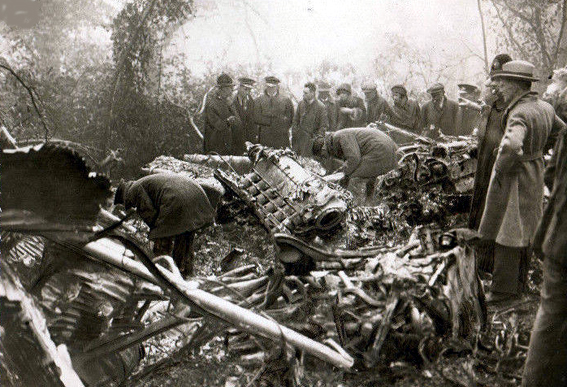 |
|
|
|
|
(below) Crash in Ross Road Wallinton
on the 7th of November 1929 |
|
|
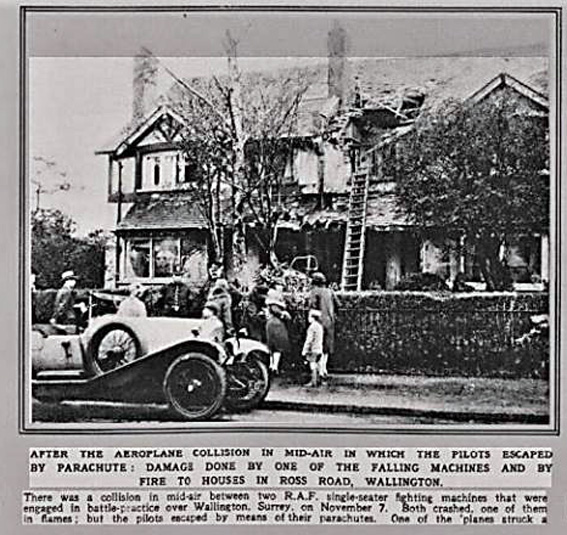 |
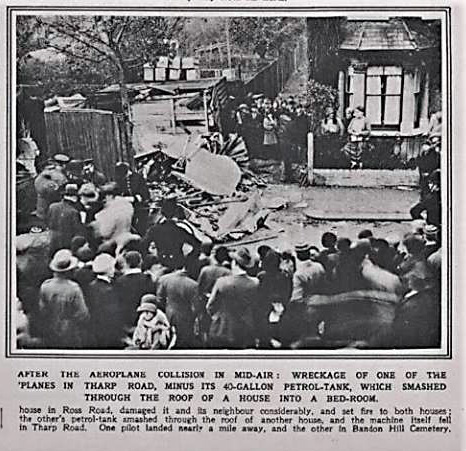 |
|
|
|
|
(below) Imperial Airways. Bristol 62 G-EAWY. 1920's |
 |
 |
|
|
1930 |
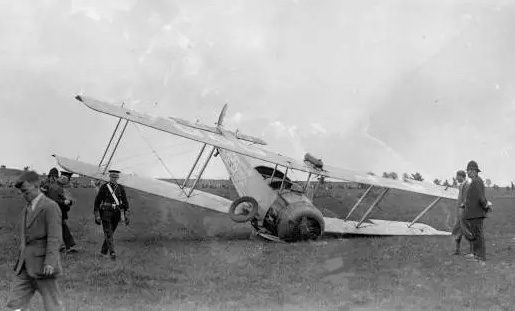 |
|
(above) an unknown crash landing in the 1930's |
|
|
(below) The Meopham Air Disaster occurred on 21 July 1930
when a Junkers F.13ge from Le Touquet to Croydon with two crew
and four passengers crashed near Meopham, Kent, with the loss
of all on board. The report of the inquiry into the accident
was made public, the first time in the United Kingdom that an
accident report had been published. The Junkers F.13ge registered
G-AAZK which was owned by the pilot Lieutenant-Colonel George
Henderson had been loaned to the Walcot Air Line to operate a
charter flight between Le Touquet in France and Croydon Airport.
As the aircraft was above Kent it appeared to have disintegrated
and crashed near the village green at Meopham five miles south
of Gravesend. Witnesses reported a rumbling noise just before
the crash and that the aircraft emerged from a cloud and then
broke apart in mid-air. The crash happened at 2:35 pm. All the
occupants except the pilot fell from the aircraft and ended up
in an orchard, all of them dead. The fuselage and one wing of
the aircraft crashed close to a bungalow, the other wing was
found a mile away. The tail was 300 yards from the crash site
in a field. The engine fell into the drive of an unoccupied house,
just missing a gardener working nearby. One of the villagers
rescued the co-pilot Charles Shearing from the wreckage and carried
him into the bungalow. A retired surgeon who lived nearby was
soon on the scene, but Shearing died soon afterwards. |
 |
|
|
|
|
On the
30th of October 1930, Handley Page W.8g G-EBIX City of Washington
struck high ground in fog at Boulogne, Paris, France, killing
three of six on board. |
|
|
|
(below) In 1930 an Air Union 'Farman Goliath',
cargo plane which when landing overan the boundary and crashed
through the corrugated airport perimeter fence, ending up on
the tram-lines in Stafford Road. |
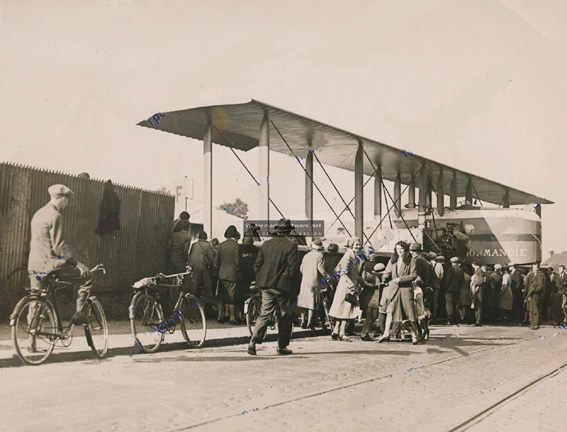 |
|
|
1931 |
|
On the 8th of August 1931, Handley Page H.P.42
G-AAGX Hannibal was operating a scheduled passenger flight from
Croydon to Paris when an engine failed and debris forced a second
engine to be shut down. A forced landing at Five Oak Green, Kent
resulted in extensive damage. No injuries occurred. Hannibal
was dismantled and trucked to Croydon to be rebuilt. |
|
1933 |
 |
|
(above and below)
On the 28th of March 1933,
'Armstrong Whitworth Argosy', G-AACI 'City of Liverpool' crashed
at Dixmude, Belgium following an in-flight fire. This is suspected
to be the first case of sabotage in the air. All fifteen people
on board were killed. |
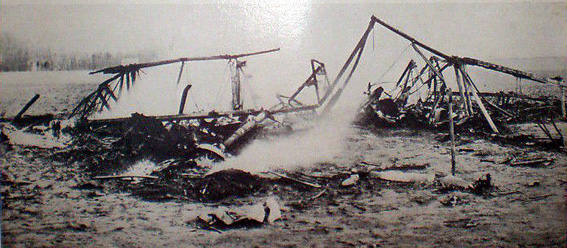 |
|
|
|
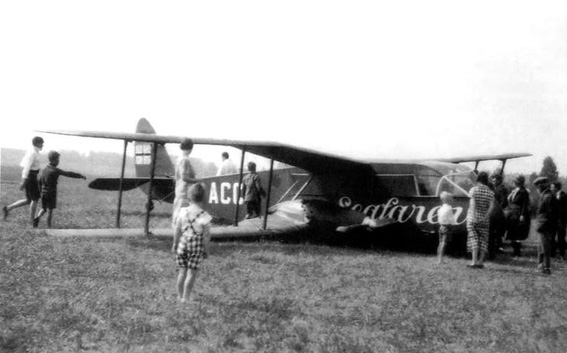 |
|
(above
and below) Amy Johnson
and Jim Morrison's 'DH84 Dragon' 'Seafarer' collapse in June
1933. |
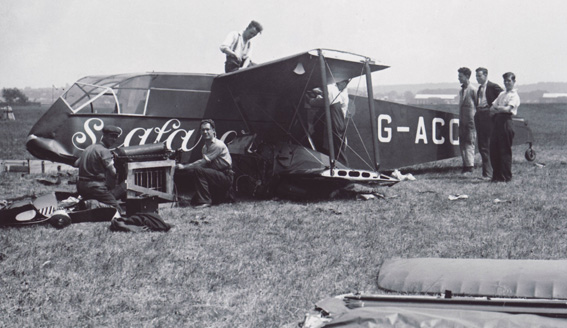 |
|
|
|
|
On the 30th of December 1933, Avro Ten G-ABLU Apollo
collided with a radio mast at Ruysselede, Belgium and crashed.
All ten people on board were killed. |
|
1934 |
|
(below) French airliner 1934. |
 |
|
|
1936 |
|
(below) Crash of a 'Douglas DC2' KLM airliner
PH-AKL on the 9th of December 1936, shortly after taking off
from the Croydon on a scheduled flight to Amsterdam, Netherlands.
The aircraft was destroyed and 15 of the 17 passengers and crew
on board died as a result of the accident. The aircraft crashed
at Hillcrest Road, Purley. And was listed as the worst UK air accident to
date. On the day of the accident Croydon Air Port was shrouded
in fog with visibility fluctuating at around 50 m (55 yd); and
all aircraft were operating under so-called "QBI" (a
Q code denoting that all operations have to be performed under
instrument flight rules) conditions. Crews of aircraft were following
a white line laid out approximately East-West on the grass surface
of Croydon's landing area during their take-off runs (a normal
procedure at several airports in the United Kingdom at the time,
that had been in use at Croydon since 1931). A number of departures
by this method had already been made that day by the time the
KLM DC-2 took off, including a Swissair DC-2 about 25 minutes
beforehand. The KLM DC-2 started its takeoff along the white
line but after about 200 yd (183 m) veered off the line to the
left and on becoming airborne headed south towards rising ground
instead of in the normal westerly direction. After flying over
the southern boundary of the airport, the aircraft hit the chimney
of a house on Hillcrest Road, Purley, then crashed into an empty
house on the opposite side of the street. The aircraft, the house
and an adjoining house (also empty at the time) were destroyed
in the crash and ensuing fire. 14 of the passengers and crew
were killed in the crash; the one surviving passenger found at
the accident site later died at Purley Hospital, the flight attendant
and radio operator also survived. Two of the passengers who died
were Admiral Arvid Lindman, a former Prime Minister of Sweden,
and Juan de la Cierva, the inventor of the Autogyro At the time
this was the worst air crash in the United Kingdom in terms of
the number of fatalities. This was the second crash of an aircraft
using the white line to take off at Croydon in fog. On 31 May
1934 an Air France aircraft carrying newspapers to Paris crashed
after hitting the mast of an aircraft radio navigation beacon
that had been erected off the end of the white-line takeoff path,
killing the two crew. |
|
(below) the pilot Captain Hautzmayer |
 |
|
 |
|
(above and below) the KLM DC2 that crashed |
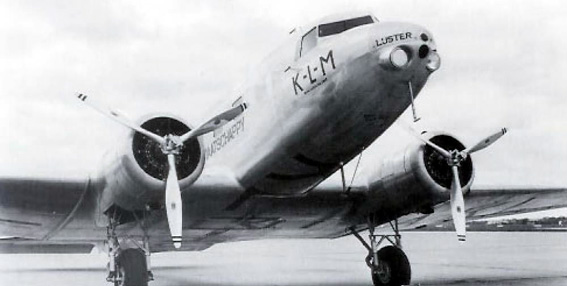 |
|
|
|
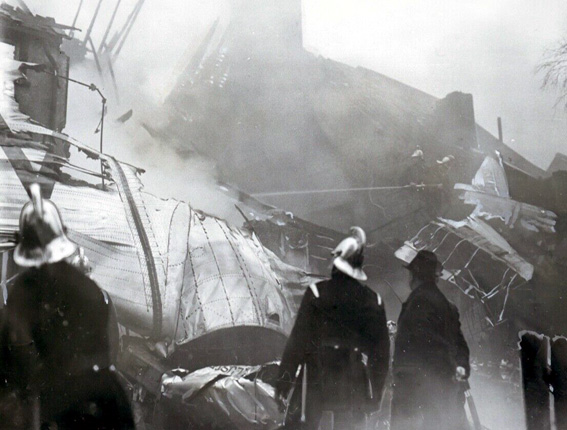 |
 |
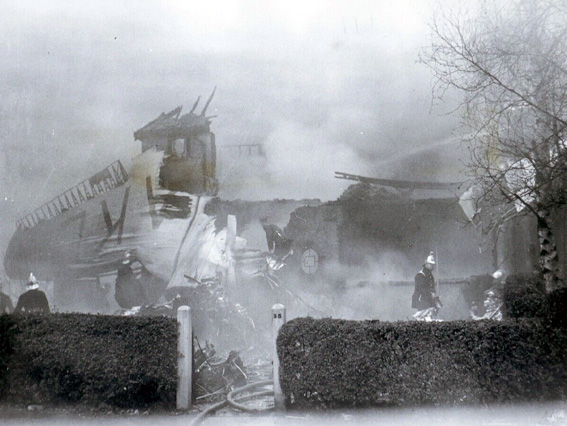 |
|
|
1937 |
|
On the
31st of May 1937, Handley Page H.P.45 (former H.P.42) G-AAXE
Hengist was destroyed in a hangar fire at Karachi, India. |
|
1938 |
|
(below) A
crash occurred on the 26th of February 1938. The plane involved
was a 'De Havilland DH.84 Dragon', Reg. No. VH-UZX. near Croydon
(London) Airport. It flew into telegraph wires and came down
on a railway embankment |
 |
|
|
1940 |
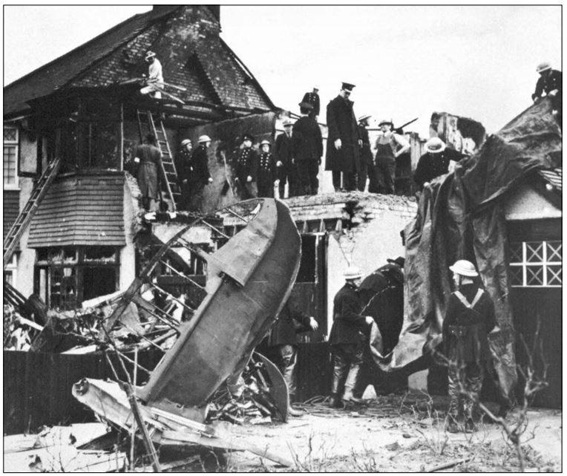 |
(above and two pics below) An RAF 'Bristol Beaufighter' from Croydon crashed
in to a house at 45 Foresters Drive, Wallington, in February
1940. Two members of the Bridge family and Pilot Officer Whitmarsh
were killed in the accident. A mother and her daughter were killed,
along with the pilot, when the Bristol Blenheim L6724 from 92
Squadron crashed into their house shortly after takeoff from
Croydon Aerodrome. Those who lost their lives were
Pilot Officer Pilot Officer Reginald Jerveland Whitmarsh 41889,
Mrs Doris Bridge (35), of Forresters Drive and her daughter,
Jill (five). Father and son survived. |
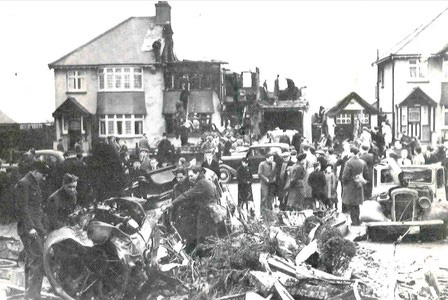 |
 |
|
|
1942 |
|
|
|
1945 |
|
(below) An RAF Transport Command Dakota
had just taken off from Croydon minutes before, in October 1945
when it developed fuel problems, and plunged in to a front garden
in Mitchley Ave Purley, killing four of the seven crew. |
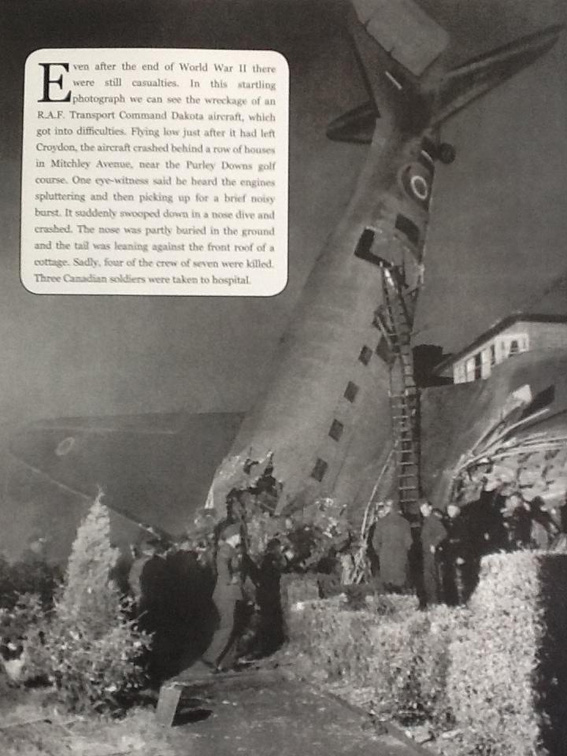 |
|
|
1947 |
|
(below 7 pictures) just before takeoff on it's fatal attempt. The accident occurred on the 25th
of January 1947 when a Spencer Airways Douglas C-47A Skytrain
(Dakota) failed to get airborne from Croydon Airport, and crashed
into a parked and empty CSA Douglas C-47 destroying both aircraft
and killing 11 passengers and one crew member. |
|
|
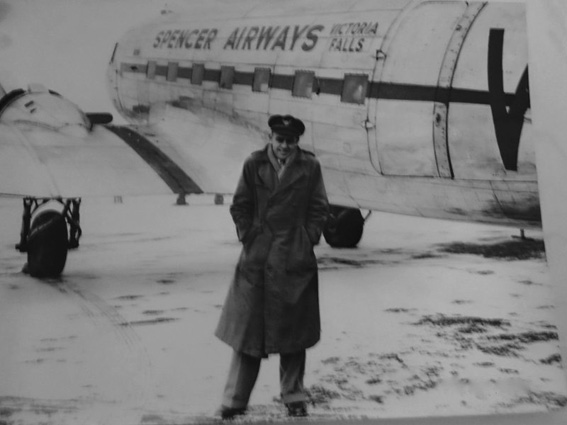 |
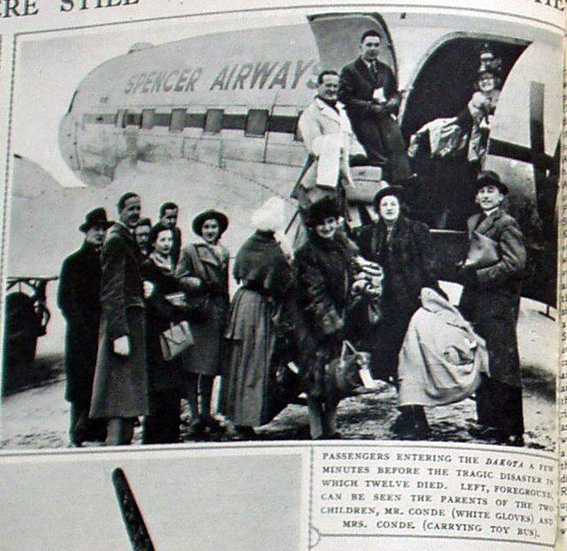 |
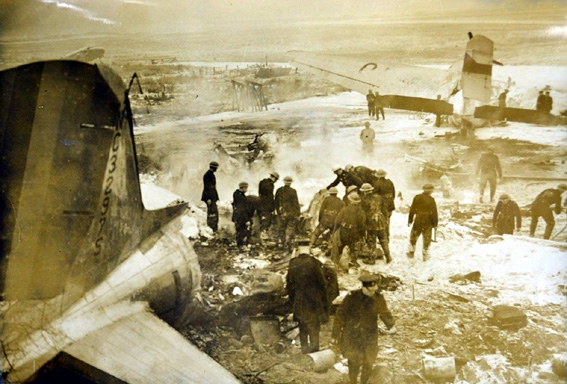 |
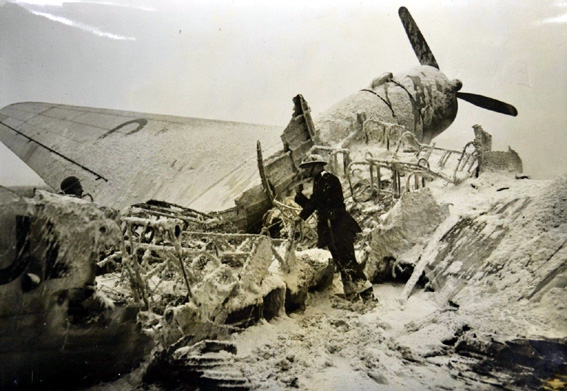 |
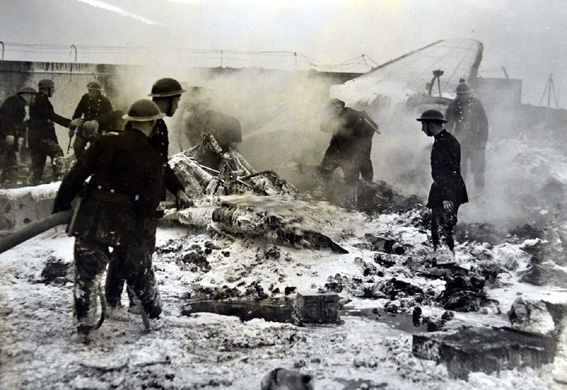 |
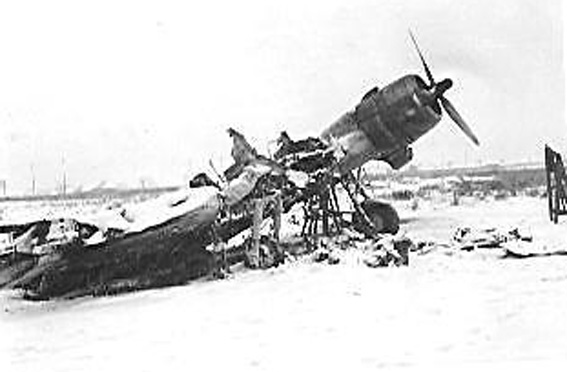 |
 |
|
|
On
the 12th of February 1947 an 'Avro 652 Anson' of 'CL Air Surveys',
G-AHKJ. following an aerial photography mission, the twin engine
aircraft was returning to Croydon Airport when, on final approach,
it crashed in a field short of the runway. Both occupants were
unhurt while the aircraft was damaged beyond repair. |
|
|
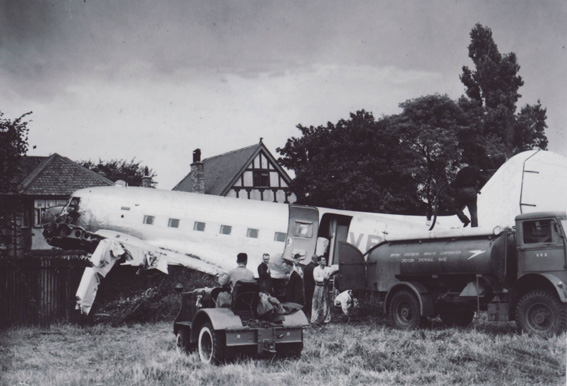 |
|
(above and below)
A China Airways 'C47' crashed
at Croydon Airport on take-off in August 1947. |
 |
|
|
1948 |
 |
|
(above) 27th February 1948 |
|
|
1949 |
 |
|
(above
and below) on the 8th
of March 1949 an 'Avro 652A 1 Anson', G-ALFJ. Shortly after takeoff
from Croydon Airport, while in initial climb, the aircraft suffered
an engine failure, stalled and crashed onto Rollason's hangar.
The pilot was rescued and unhurt and luckily, no one was injured
in the hangar. The aircraft was damaged beyond repair. |
 |
|
|
1952 |
|
(below) A 'DH 84A Dragon Rapide' G-AIZI
crashed. Starboard engine lost power on take-off from Croydon
and crashed into a church in Wallington, Surrey 14.9.52; aircraft
destroyed by fire and Rodney Carne (pilot/owner) killed. |
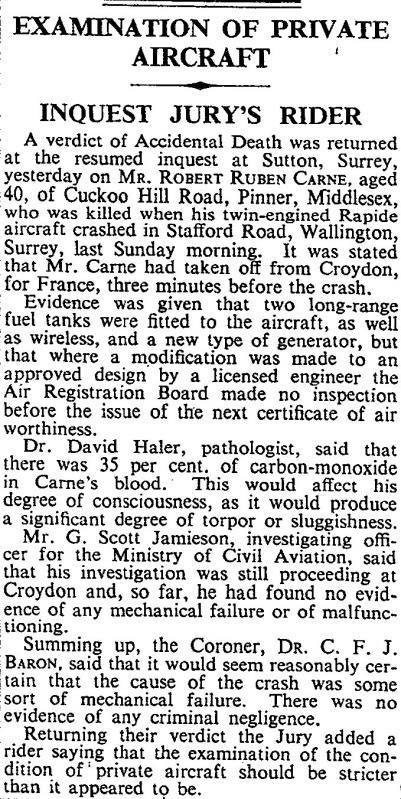 |
|
|
1953 |
|
A Beechcraft
Bonanza crashed at Croydon on Saturday the 19th of September
1953 at 1240 hrs. The pilot’s name was Mr. L. Senuk and
the aircraft was N2827V. Bonanza is shown as year of manufacture
1947 with .Leo Senuk taking delivery c/0 Pan Am. The aircraft
took off at about 1239 hrs., and on attaining an altitude of
150-200 feet near the southwestern boundary of the airport a
power failure occurred. The left wing then dropped suddenly and
the aircraft turned to the left, lost height rapidly, and struck
the ground. Fire broke out on impact. The pilot was killed. |
|
1964 |
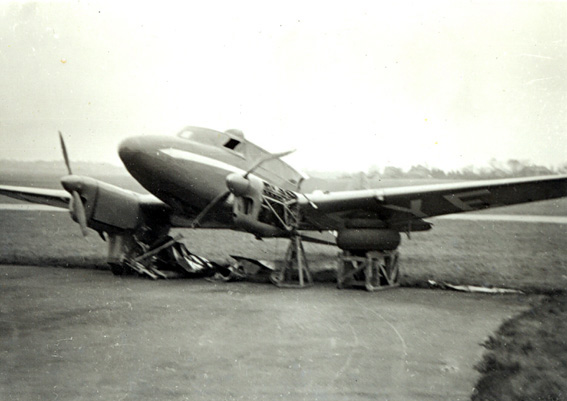 |
|
(above) the undercarrieage collapsed on this 'Percival
Q6' G-AEYE. Pictured in 1964 behind 'D Hangar'. |
|
 |
 |